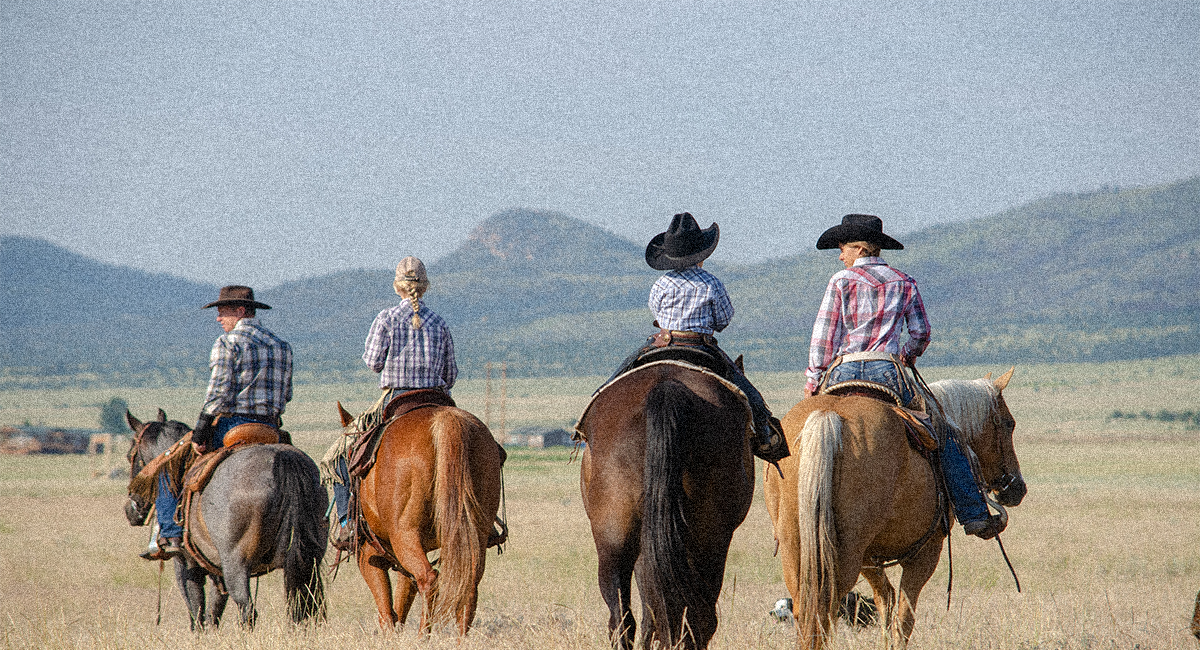Meet Bill Slovek
For more than a decade, Bill Slovek has been an active leader within the beef industry, and he believes, “if you’re not learning, you’re getting left behind.”
Bill, who currently serves on the Cattlemen’s Beef Board Executive Committee, is a rancher based in Phillip, South Dakota. He runs a cow-calf herd along with his wife Pennie, sons Brock and Bo, and daughter Belinda, who all have their own cattle and help on the ranch.
Slovek Ranch sells registered Angus and Angus-hybrid bulls during their annual sale held every March at the local sale barn. They also sell bulls private treaty and lease bulls for breeding. The Sloveks also have a herd of commercial cattle.
For several years, Slovek Ranch has been raising cattle in the Non-Hormone Treated Cattle program and the Global Animal Partnership (GAP) certified program. These programs give them more marketing opportunities and provide an additional layer of trust to consumers.
“The programs get you in the door for premiums when you are selling fat cattle,” Bill said. “Some consumers are willing to pay more for cattle raised in these programs.”
For Bill, some of his most memorable experiences as a cattle producer have been serving amongst his peers in organizations like the South Dakota Cattlemen’s Association (SDCA), National Cattlemen’s Beef Association (NCBA) and now, the Cattlemen’s Beef Board (CBB). Bill believes in participating in these organizations to give a voice to the cattle industry and accurately represent producers.
“If you’re not out there telling your story, somebody will tell your story the way they want it told instead,” he said. “The story that mainstream media wants people to hear is not always the truth when it comes to production agriculture.”
Through serving as an officer for SDCA and as the vice chair and chair of NCBA’s Tax and Credit Committee, Bill met many interesting people and built lifelong friendships with peers from a variety of backgrounds in the cattle industry. As a cattle producer himself, Bill thought he knew about the policy issues and priorities of NCBA, but once he became active with state and national associations, he said he still had a lot to learn. Being involved taught him the details of legislative issues and the ins and outs of how state and national beef organizations work on behalf of their members.
In South Dakota, Bill’s largest obstacle on the ranch is the persistent drought, forcing him to, once again, ship some of his cattle to regions with available feed.
“We are having a dry fall right now which dictates that we will have a below-average grass crop next year even if we have normal moisture next year,” he explained. “It has been challenging, and we are not out of the woods yet.”
As he described, the cattle market is starting to turn upward and favor the rancher, so it is a difficult decision whether to keep cattle and buy hay or downsize his herd to minimize expenses. It is a frustrating place to be in if the market is good and you only have half the usual number of cattle on the ranch.
Outside of drought, issues like Waters of the U.S., the Death Tax, and Stepped-Up Basis greatly impact many people across the country in production agriculture. Cattle producers like Bill voice these concerns to NCBA, whose role is to fight on Capitol Hill in defense of cattle men and women.
“Organizations like NCBA can be there in Washington, D.C., and be on top of things to look out for us,” Bill said.
While there are many challenges to face, there is an equal, if not greater, amount of innovation and opportunity in front of cattle producers.
“We can take the DNA of a heifer calf the day she is born and get results back in a few weeks and know more about her than I knew about a cow I had around for 10 years,” Bill said.
Technology offers a way for farmers and ranchers to expand their business or increase margins without having to acquire more land, which is increasingly difficult. Slovek Ranch utilizes DNA testing, AI technology, embryo transfers and other genetic innovation. In addition, animal nutrition can be specialized to meet cattle’s needs at different stages of their lifecycle.
To Bill, staying proactive and adopting new technology is what will propel the beef industry forward and keep the U.S. the top country for quality beef production.
